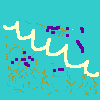 What is the
evidence for a link between preservatives and cancer and other
toxic effects?
What is the
evidence for a link between preservatives and cancer and other
toxic effects? What is the
evidence for a link between preservatives and cancer and other
toxic effects?
What is the
evidence for a link between preservatives and cancer and other
toxic effects?Back to Specific Concerns Page
...prevent the growth of molds, yeasts and bacteria.
... keep foods from becoming rancid, browning, or developing black spots. Antioxidants also minimize the damage to some essential amino acids and the loss of some vitamins
Preservatives must be listed by their common names on ingredient labels of all foods that contain them.



Amines are ubiqitous in nature, including in food, biological systems, and the environment.
The risk of adverse health effects from botulism is much greater than the risk of developing cancer from small amounts of nitrites, therefore nitrites are allowed.
Butylated hydroxyanisole (BHA) is a phenolic antioxidant Phenolic antioxidants prevent rancidity of fats and oils in food by protecting against lipid oxidation.
When the food additives amendment was enacted (1958), BHA and BHT were listed as common preservatives considered generally recognized as safe (GRAS). GRAS regulations limit BHA and BHT to 0.02 percent or 200 parts per million (ppm) of the fat or oil content of the food product.
Both BHT and BHA have been removed from the GRAS list and subjected to tolerances.
BHA is also used as a preservative for dry foods, such as cereals. The FDA set limits for each type of food. On cereals, for example, FDA limited BHA to 50 ppm of the total product.
Studies have suggested that at very high levels in the diets of laboratory animals, BHA could cause tumors in the forestomach of rats, mice and hamsters, and liver tumors in fish. The importance of this in humans is unknown, because humans do not have forestomachs. BHA did not cause cancer in experimental dogs, pigs, and monkeys, species which do not have forestomachs.
Other studies have shown that BHA protects against some chemical carcinogens, depending on the conditions of the tests.
From "A Fresh Look at Food Preservatives" by Judith E. Foulke, staff writer for FDA Consumer Magazine
Sulfites are used as antioxidants to prevent discoloration of light-colored fruits and vegetables, such as dried apples and dehydrated potatoes. They are also used in wine-making because they inhibit bacterial growth but do not interfere with the desired development of yeast.
FDA prohibits the use of sulfites in foods that are important sources of thiamin (vitamin B1), such as enriched flour, because sulfites destroy the nutrient.
Most people don't have a problem with sulfites. However, since 1985, when the agency started reporting on sulfites through the Adverse Reaction Monitoring System, over 1,000 adverse reactions have been recorded. FDA estimated that more than 1 million asthmatics are sensitive or allergic to sulfites.
In 1986, FDA ruled that sulfites used specifically as preservatives must be listed on the label, regardless of the amount in the finished product. Sulfites used in food processing but not serving as preservatives in the final food must be listed on the label if present at levels of 10 parts per million (ppm) or higher. Regulations issued in 1990 extended these required listings to standardized foods.
Also in 1986, FDA banned the use of sulfites on fruits and vegetables intended to be eaten raw, such as in salad bars and grocery store produce sections. Please the FDA site Sulfites: Safe for Most, Dangerous for Some
The symptom most reported by sulfite-sensitive people is difficulty breathing. Other problems range from stomach ache and hives to anaphylactic shock. In addition to knowing which food preservatives are sulfites and which foods are likely to contain them, sulfite-sensitive consumers can help themselves avoid health problems by following these suggestions:
(source://www.medaccess.com/consumer_rep/hc0045.htm)
Prepared Summer 1997 by Bernadene Magnuson, Ph.D.
University of Idaho, Dept. of Food Science and Toxicology - EXTOXNET FAQ Team.